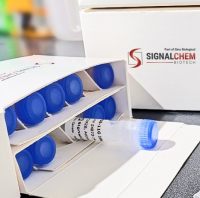TP53 Mutation Detection by SSCP and Sequencing
互联网
971
The TP53 tumor suppressor gene on chromosome 17p13.1 contains 11 exons and encodes a nuclear phosphoprotein of 53 kDa, a transcription factor involved in the regulation of the cell cycle (1 ). Normal p53 protein functions as a cell cycle checkpoint and is involved in DNA repair and/or apoptosis (2 ). The p53 protein acts as a powerful transcription factor that binds to as many as 300 different promoter elements in the genome, broadly altering patterns of specific gene expression (3 ). Loss of normal p53 function can lead to uncontrolled cell proliferation and neoplastic transformation. A TP53 mutation, most commonly a missense mutation, may cause either a loss of tumor suppressor function or, in certain cases, a gain of oncogenic function (4 –6 ). This functional duality may be one explanation for the high frequency of TP53 mutations in human cancer (7 –10 ), which makes the TP53 gene especially suitable for mutational analysis. The modest size of the highly conserved TP53 gene (p53 protein contains 393 amino acids in human) is an advantage in mutation analysis. Mutations in TP53 are usually clustered within the most conserved regions in the area of exons 5–8, corresponding to the sequence-specific DNA-binding domain of the p53 protein (11 ,12 ).









